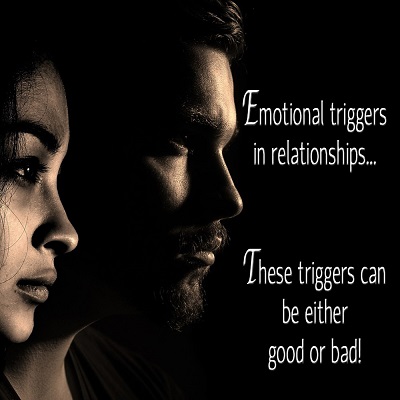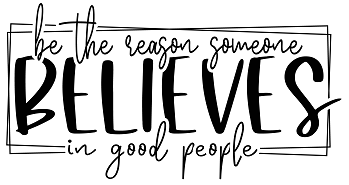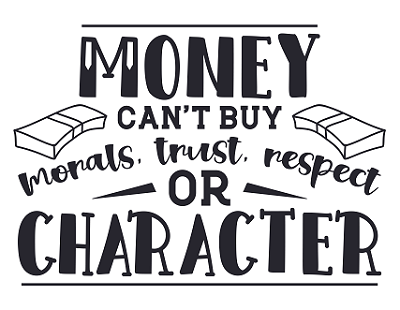 Virtually everyone has baggage, right? The type of person we have developed and nurtured and grown to be, right now, in this moment, is a combination of both our past experiences and reactions to them.
Virtually everyone has baggage, right? The type of person we have developed and nurtured and grown to be, right now, in this moment, is a combination of both our past experiences and reactions to them.
Everything from the past, good and bad, has created a database of emotional responses in our brains. This catalogue of emotions is quarried every time we require an emotion; happy, sad, angry, guilt, shame, indifference, etc.
Relationships are supposed to be fantastic! We’ve found someone who appreciates our quirks, laughs at our lame jokes and loves us anyway. Problems sometimes arise in relationships though when emotional triggers are set off and they aren’t handled effectively, and respectfully.
The emotional database renders a response that’s inappropriate or out of proportion to the situation and all hell breaks loose. Now there’s an argument in the making, to which the emotional index responds with hurt feelings, regret, embarrassment and even loss.
What is an Emotional Trigger?
As above, our existence is but a collection of experiences and reactions. When referring to a trigger, it can pertain to both good and bad experiences, but most often it’s not the good ones as it does not elicit a pleasant response. An emotional trigger can be a person, situation or experience but the emotion rendered to process it is very intense and, more often than not, exaggerated.
Typically, relationship triggers are the result of an unpleasant past experience. Some common triggers might be being cheated on or being the victim of physical and/or psychological abuse.
There may be feelings of resentment or trust issues brought up in current relationships due to a “trigger” our partner has inadvertently tripped. Unmet expectations, emotional withdrawal, and boundaries are also examples.
Working Through Emotional Triggers
Picture the trigger on a gun. When the trigger is pulled, it’s only a fraction of a second before the bullet is ejected from the chamber with extreme velocity and powerful enough to do some serious damage to the intended target. That’s exactly how some of us respond to emotional triggers.
It’s not healthy or helpful, to either party involved. The following steps, when practiced, will keep one from blowing up and spiraling out of control after an emotional trigger has been invoked.
Stop, Breathe, Don’t React!
Yes, easier said than done. No one said this would be easy. But it’s a necessary first step. The immediate, irrational reaction is what gets us in trouble most of the time. Take a deep breath, count to ten, count to one hundred, leave the room, go meditate, scream into a pillow, break spaghetti noodles; whatever it takes to keep from allowing the emotion control over the situation or circumstance.
If time doesn’t allow for a calming walk in the park, try the 5-4-3-2-1- countdown method.
Using the current surroundings, focus on senses and:
- Name 5 items which can be seen right now (a bird, a chair, a pencil, a phone, a tree?).
- Name 4 things which can be touched or felt (hair, desk, grass, cup?).
- Name 3 things which be heard (clock ticking, cars driving by, a dog barking?).
- Name 2 smells (popcorn in the microwave, perfume?).
- Name 1 taste (coffee?).
One method obviously isn’t going to work for everyone 100% of the time. Try different things and find the most effective way to stop from swiftly reacting emotionally.
Identify the Emotion & Trigger
Validate the emotion by acknowledging it. Anger? Jealousy? Resentment? Disappointment? Now, think back to the last time this emotion in particular reared its ugly head. It might be last week or 20 years ago, but it’s important to identify the source. Don’t suffocate the emotion or try to avoid it; that’s the opposite of dealing with it.
As hard as it may be, the real goal here is to face the demon and extinguish its power. To feel feelings is completely natural and normal. It’s what we do with the emotions that makes all the difference.
Consider All Angles
Now that we’ve calmed down a bit, the emotion has been named and the trigger identified, we know the past event that caused this eruption of feelings to surface again. It’s time to rationally deal with the moment at hand. Instead of jumping to conclusions, stop and really evaluate other possibilities.
If the immediate thought is questions of a cheating partner, has this partner ever given reason to be doubted? Is there valid reason in this relationship for mistrust?
Whatever the emotion, it’s important to release its power by getting to the root and destroying it. Negative emotions are like weeds. If we don’t want them to overrun the garden, we have to get rid of them.
Decide What’s Needed
Look, every emotion doesn’t require an action. Sometimes the answer is to accept it and move past it. And other times, we need to sit down and have a calm and nonthreatening talk with our partner to get all the cards on the table. Express why this is causing some much distress and talk about ways to avoid recurrence. Talking it out can be intimidating, but it’s how people grow together and nourish the partnership. Get comfortable with the discomfort of communication.
Let It Go!
And lastly, it becomes almost second-nature to harp on a singular event over and over again. Let it go. Sure, we need the feeling that our partner understands why this is so important and how much it hurts. But how can we let it go and move on if we keep bringing it up? If this relationship is supposed to last, we have to learn to let it go once it’s been addressed.
Relationships are hard work, but so worth it when people work together with respect and support. Releasing emotional triggers can be tricky, but with patience and the right tools, they will no longer be able to hold a relationship captive.





